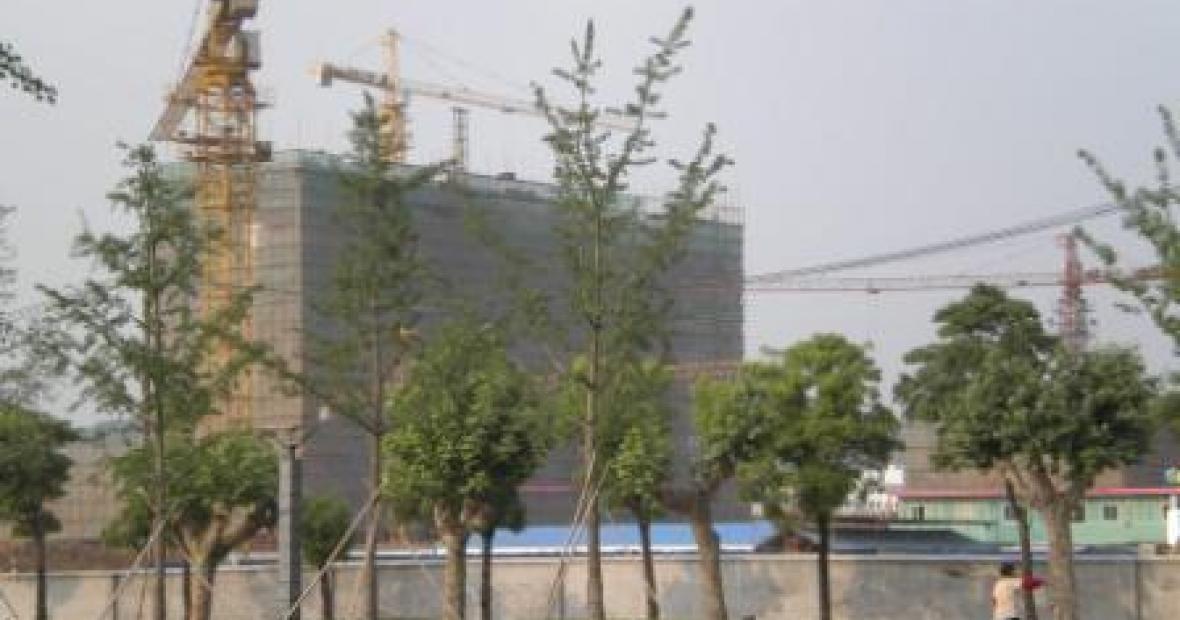Grasping the Explosive Growth of China
We leave the city and confront China's economic engine
In the U.S., we often hear about the scale of projects and economic growth in China, but from a distance and with only our own scale of reference, it's difficult to grasp. Even here in central Nanjing, with new skyscrapers and shopping malls under construction in seemingly every block, the feeling is similar to that of redeveloping areas in Chicago, or New York, or L.A. It's impressive, but woven into the fabric of the energy of a city at perhaps a hyper-level from what we have come to expect.
In the morning, we walk up the the magazine kiosk on Hankou Lu and purchase a copy of the English language China Daily. Though we are careful to parse the prose and assume there are facts and shadings that we are not being given, The Daily does provide an intriguing window onto the scale of China. In yesterday's paper, we learned that 505,000 people visited the Shanghai expo on Saturday (half a million people in one place in a single day)! Now that's an attendance figure. We plan to attend the Expo on our last day in China, though we approach it with some trepidation. A more interesting article for us as Iowans was a long piece about the changing face of farming. It began with an overview of Xinfadi, the wholesale produce, meat, seafood and seed market in Beijing, open 24 hours a day, 365 days a year. As many as 80,000 people buy and sell pork, cabbage, rice, shrimp and the rest every day. Supplying Xinfadi and other markets like it across China are 300 million farmers. Think about that. There are as many farmers in China as there are people in the U.S. (roughly). Of course, this is largely because most farms are tiny, one to ten acres, and are farmed by hand. But the fact that they have the infrastructure to move products from all those places to markets of the scale of Xinfadi is astounding.
On Saturday, Don and I took a ride on the brand new #2 Line of the Nanjing subway. The line opened the day before and provides a much faster link between the Gulou campus of Nanjing University and the "new campus" where most of the undergraduates study and reside, out in the suburbs. Aside from a few glitches, the ride was great, we made some new friends with a quartet of preteens intrigued by the foreigners and eager to try their English, and we were knocked out by the army of people in every station to assist new riders.
The new campus is impressive, a brand new university that has sprung out of the ground with a stunning library and campus center, beautiful athletic fields, striking classroom buildings, and 8 enormous dormitory buildings. The campus map was a little confusing until we realized that the buildings to our east, under construction, were already marked on the map. We figured we toured about a quarter of the campus, maybe, which spread north at some distance, and will soon double to the east. Faculty colleagues tell us they are building 3000 faculty apartments there to handle housing needs for faculty on both campus, housing being a major expense and problem in China these days.
The subway ride to the new campus is above ground about half the way. All along the tracks we saw enormous housing complexes under construction or newly built, linked by broad new boulevards, new parks, and new shopping centers. These apartment blocks might be 10 stories high and extend for 2 or 3 city blocks! Everything was instantly landscaped, with mature trees moved in and planted by the hundreds. The scale of everything was huge, but was punctuated by empty lots sprouting with gardens and small farms, with plenty of people out wielding hoes and shovels as they carved out a spot to grow vegetables.
This glimpse of China beyond the Nanjing city walls really drove home the scale of the economic engine of China. Nanjing is a medium sized city in China. Population estimates range from 7 to 10 million, and now I understand how the figure can be so high. This medium sized city is as big, or bigger than New York City, than Chicago, and it shows no signs of stopping its growth anytime soon.

